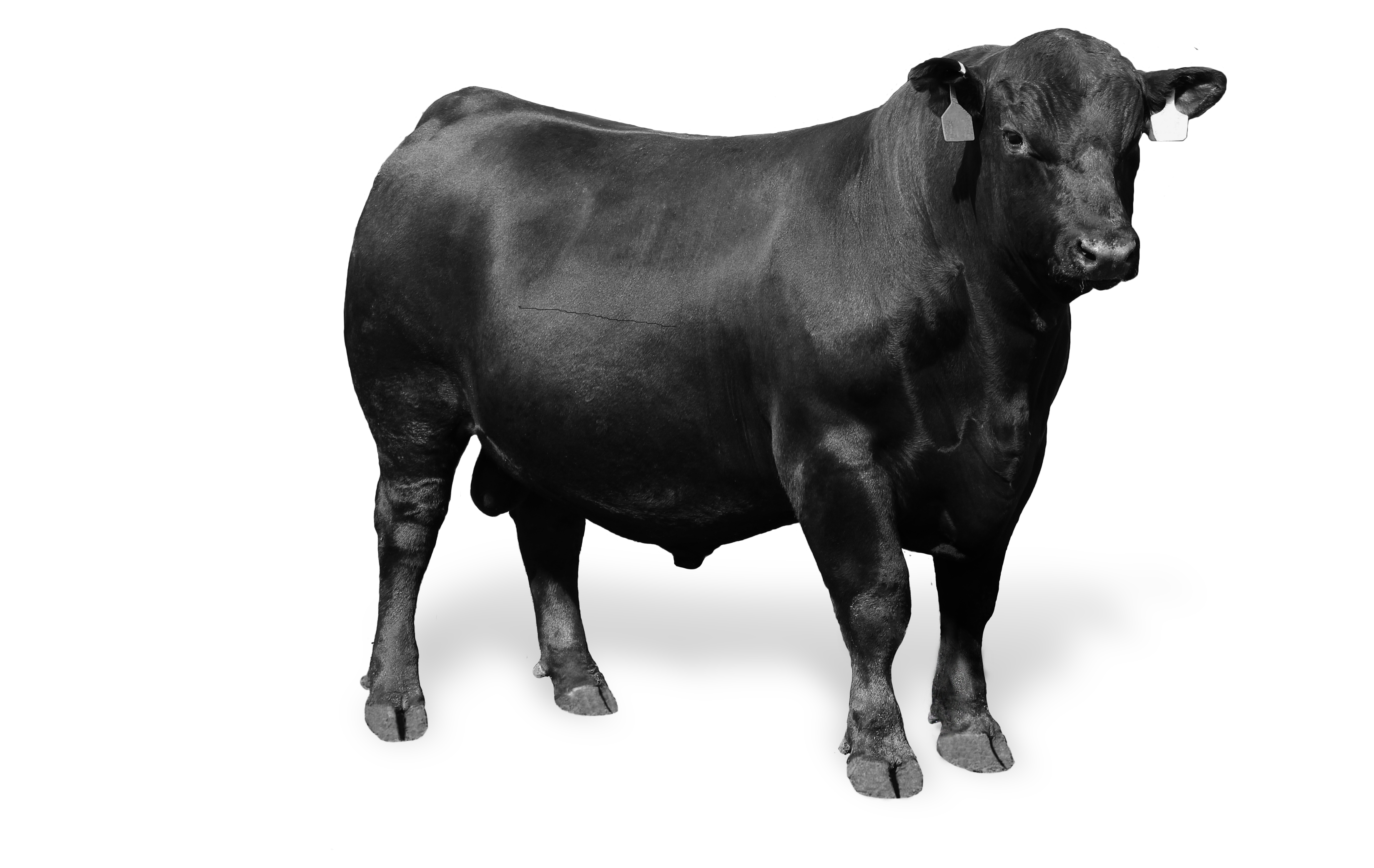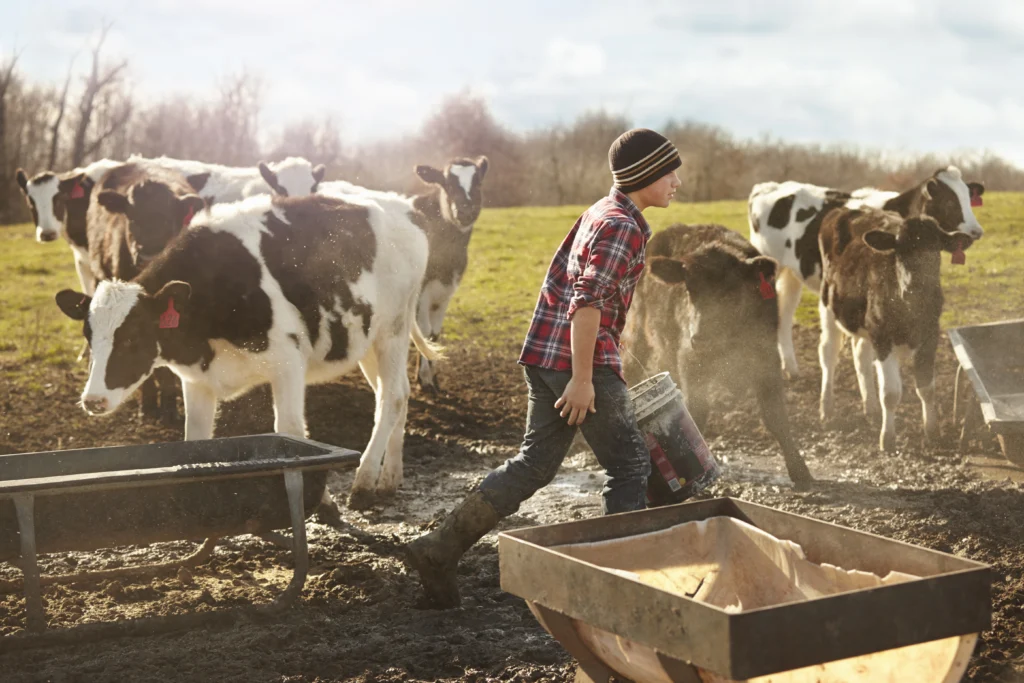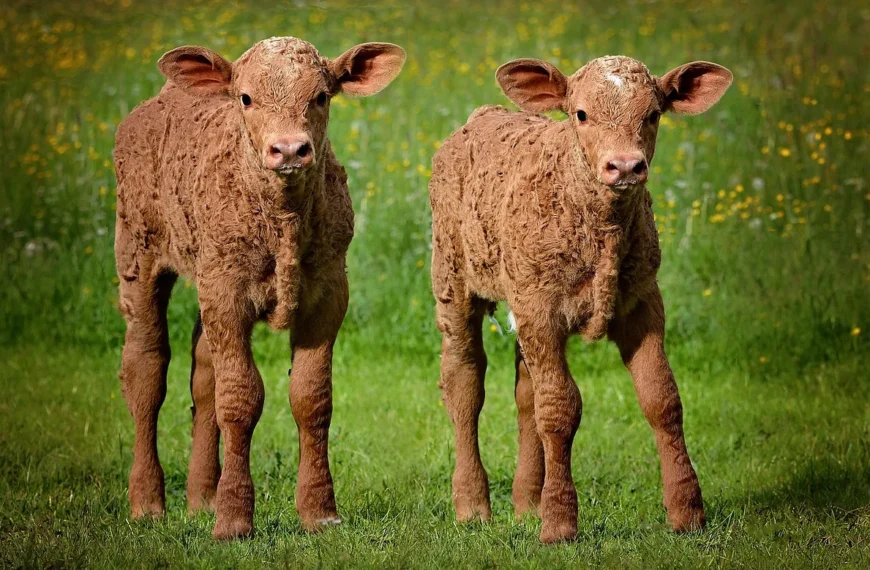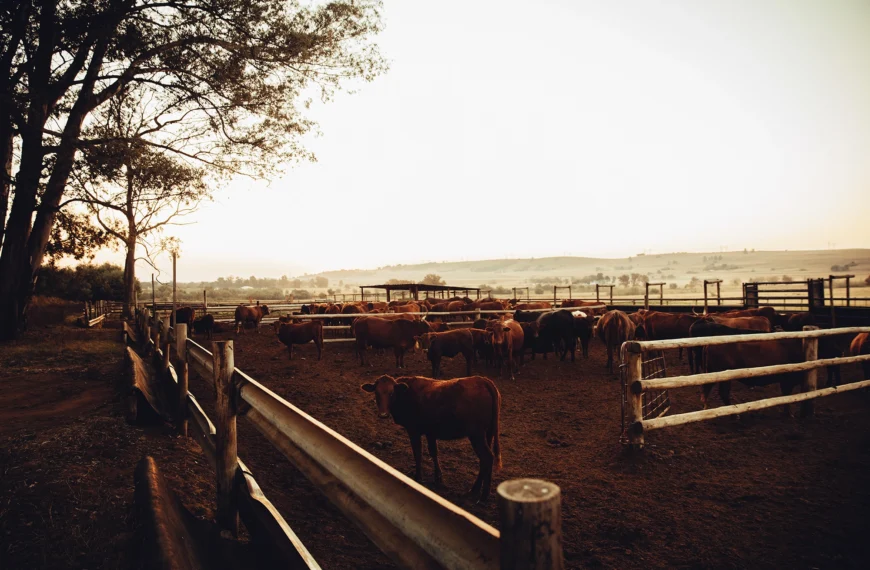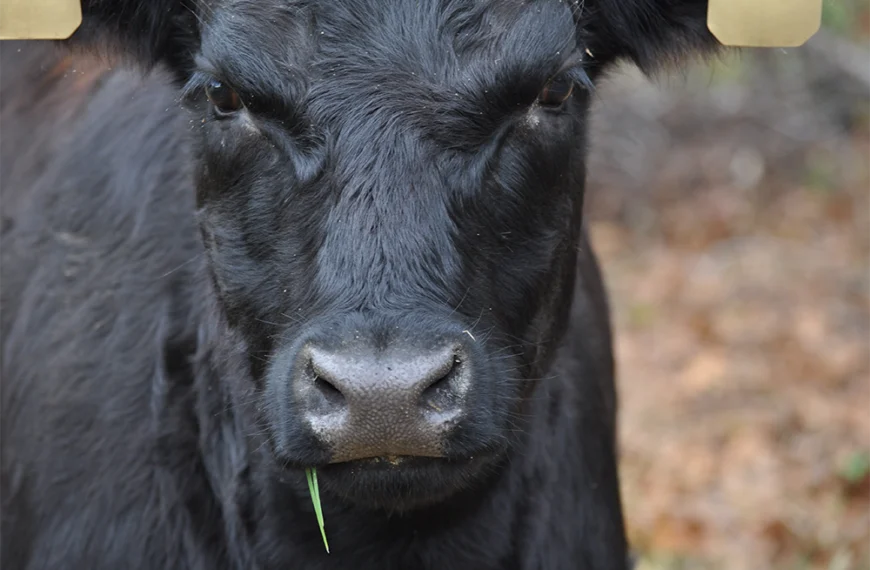A Comprehensive Guide for New Cattlemen: Are you dreaming of starting your own small cattle operation? Whether you’re a young family looking to dive into agriculture or an individual seeking a rewarding venture in livestock management, this comprehensive guide will walk you through the essential steps to get your cattle business off the ground. From choosing the right breed to managing your herd efficiently, we’ve got you covered with expert advice and practical tips.
Table of Contents
- Introduction: Why Start a Small Cattle Operation?
- Finding the Right Cows for Your Operation
- Starting Small: The Importance of Gradual Growth
- Essential Infrastructure: Setting Up Your Farm
- Feeding Your Herd: Strategies and Alternatives
- Herd Management: Tips for Efficient Operations
- Navigating Challenges: Drought and Financial Assistance
- Collaboration and Cost-Cutting: Working with Neighbors
- Getting Help: Resources and Support
- Conclusion: Your Journey to Successful Cattle Farming
Introduction: Why Start a Small Cattle Operation?
Starting a small cattle operation can be an exciting and rewarding venture. It offers the opportunity to work closely with animals, contribute to the food supply chain, and potentially create a sustainable business. For many, it’s a chance to embrace a rural lifestyle and connect with the land. However, it’s important to understand that cattle farming requires dedication, hard work, and a willingness to learn.
This guide aims to provide you with the foundational knowledge needed to embark on your cattle farming journey. We’ll cover everything from selecting the right breed for your needs to managing your herd efficiently and economically.
Finding the Right Cows for Your Operation
One of the most crucial decisions you’ll make when starting your cattle operation is choosing the right breed. Different breeds have varying characteristics that can significantly impact your success. Here are some popular breeds to consider:
Angus
Angus cattle are known for their:
- High-quality beef production
- Excellent marbling
- Hardiness and adaptability
- Good mothering abilities
Angus is often the go-to choice for many small operations due to their popularity in the market and overall versatility.
Brangus
Brangus cattle are a cross between Angus and Brahman, offering:
- Heat tolerance
- Insect resistance
- Good carcass quality
- Adaptability to various climates
This breed is particularly suited for operations in warmer regions.
Charolais
Charolais cattle are recognized for their:
- Rapid weight gain
- Lean meat production
- Large frame size
- Docile temperament
They’re an excellent choice if you’re focusing on producing larger cattle for the meat market.
Hereford
Hereford cattle are popular for their:
- Ease of calving
- Docile nature
- Efficient feed conversion
- Hardiness in cold climates
These cattle are well-suited for beginners due to their generally calm disposition.
Considerations When Choosing Your Breed
When selecting your breed, consider:
- Your local climate and environment
- Available feed resources
- Market demands in your area
- Your personal preferences and goals
It’s advisable to consult with local experienced cattlemen or your county extension office to get region-specific advice on breed selection.
Starting Small: The Importance of Gradual Growth
One of the most common pitfalls for new cattle operators is trying to grow too big, too fast. While the enthusiasm is admirable, rapid expansion can lead to financial strain and management challenges. Here’s why starting small is crucial:
Benefits of Starting Small
- Lower Initial Investment: Starting with a smaller herd means less upfront cost for cattle, feed, and infrastructure.
- Manageable Learning Curve: A smaller operation allows you to learn the ropes without being overwhelmed.
- Reduced Risk: If unforeseen challenges arise, the financial impact is less severe with a smaller herd.
- Flexibility: It’s easier to adapt and make changes with a smaller operation as you learn what works best for you.
Tips for Gradual Growth
- Start with 5-10 cows and grow your herd organically by retaining heifers.
- Reinvest profits into improving your operation before expanding.
- Set realistic growth targets based on your resources and market conditions.
- Continuously educate yourself and improve your management skills before scaling up.
Remember, successful cattle operations are built on experience and knowledge. Give yourself time to acquire both before significantly expanding your herd.
Essential Infrastructure: Setting Up Your Farm
Before bringing cattle onto your property, you need to ensure you have the necessary infrastructure in place. Here are the key elements to consider:
Fencing
Good fencing is crucial for keeping your cattle safe and contained. Options include:
- Barbed wire fencing
- Woven wire fencing
- Electric fencing
Ensure your fences are sturdy and well-maintained to prevent escapes and protect your cattle from predators.
Water Sources
Cattle require a consistent supply of clean water. Consider:
- Natural water sources like ponds or streams
- Wells with pumps
- Water troughs
Ensure that water is accessible in all pastures and that you have a backup plan in case of drought or equipment failure.
Shelter
While cattle can tolerate various weather conditions, some shelter is beneficial. This could include:
- Natural windbreaks (trees, hills)
- Simple three-sided shelters
- Barns for winter calving or severe weather
Handling Facilities
You’ll need a way to safely work with your cattle for health checks, treatments, and loading. Basic handling facilities include:
- A squeeze chute
- Holding pens
- Loading chute
Pasture Management
Divide your land into paddocks to allow for rotational grazing. This helps:
- Maximize forage utilization
- Prevent overgrazing
- Reduce parasite loads
Feeding Your Herd: Strategies and Alternatives
Proper nutrition is key to the health and productivity of your cattle. While pasture grazing should form the basis of your feeding strategy, you may need to supplement, especially during winter or drought conditions.
Pasture Management
- Implement a rotational grazing system to maximize pasture productivity.
- Regularly assess pasture quality and adjust your grazing plan accordingly.
- Consider overseeding pastures with legumes to improve nutritional value.
Hay and Silage
- Stock up on quality hay for winter feeding or during drought.
- Consider making your own silage if you have the equipment and storage facilities.
Grain and Supplements
- Use grain supplements judiciously, especially for finishing cattle or supporting lactating cows.
- Provide mineral supplements to address any deficiencies in your local soil and forage.
Alternative Feeding Solutions
When traditional feeding methods are too costly or impractical, consider these alternatives:
- Bale Grazing: Place hay bales strategically in your pastures for winter feeding, reducing labor and distributing nutrients.
- Stockpile Grazing: Allow grass to grow in certain pastures during the late summer and fall for winter grazing.
- Cover Crops: Plant cover crops that can be grazed, providing nutrition and improving soil health.
- Browse: If you have wooded areas, allow cattle to browse on leaves and shrubs as a supplement to their diet.
Remember, the key is to balance nutrition with cost-effectiveness. Consult with a livestock nutritionist or your local extension office to develop a feeding plan tailored to your specific situation.
Herd Management: Tips for Efficient Operations
Efficient herd management is crucial for the success of your cattle operation. Here are some key strategies to help you manage your herd effectively:
Record Keeping
Maintain detailed records of:
- Individual animal identification
- Breeding and calving dates
- Health treatments and vaccinations
- Weight gain and production data
- Financial transactions
Good record-keeping helps you make informed decisions and identify areas for improvement.
Health Management
- Develop a vaccination program with your local veterinarian.
- Regularly monitor your herd for signs of illness or distress.
- Implement a parasite control program appropriate for your region.
- Practice good biosecurity to prevent the introduction of diseases.
Breeding Management
- Choose a breeding system (e.g., natural service or artificial insemination) that suits your operation.
- Plan your breeding season to align with your resources and market goals.
- Select bulls or semen based on traits that will improve your herd.
- Monitor cow body condition and adjust nutrition as needed for optimal breeding performance.
Calving Management
- Prepare a clean, dry area for calving.
- Monitor cows closely during calving season.
- Ensure calves receive colostrum within the first few hours of life.
- Tag and record new calves promptly.
Culling Strategies
Regularly evaluate your herd and cull animals that:
- Have poor production performance
- Exhibit undesirable traits
- Have recurring health issues
- Are beyond their peak productive years
Culling helps maintain a healthy, productive herd and manages your resources efficiently.
Navigating Challenges: Drought and Financial Assistance
Cattle farming comes with its share of challenges, with drought being one of the most significant. Understanding how to navigate these difficult times and knowing where to find help is crucial for long-term success.
Drought Management Strategies
- Develop a Drought Plan: Have a written plan outlining steps to take as drought conditions worsen.
- Monitor Water Sources: Regularly check water quality and quantity, especially during dry periods.
- Adjust Stocking Rates: Be prepared to reduce your herd size to match available forage and water.
- Alternative Feeding Strategies: Consider options like limit feeding or using alternative feed sources.
- Weed Management: Control weeds that compete with forage for limited water resources.
Working with Your Local Extension Office
Your local extension office can be an invaluable resource during challenging times. They can provide:
- Up-to-date information on local conditions
- Educational resources on drought management
- Connections to local and state assistance programs
- Guidance on applying for financial aid
Financial Assistance Programs
Several programs are available to help cattlemen during tough times:
- Livestock Forage Disaster Program (LFP): Provides compensation to eligible livestock producers who have suffered grazing losses due to drought or fire.
- Emergency Assistance for Livestock, Honeybees, and Farm-Raised Fish Program (ELAP): Covers losses due to disease, adverse weather, or other conditions not covered by LFP.
- Environmental Quality Incentives Program (EQIP): Offers financial and technical assistance to implement conservation practices, which can include drought mitigation measures.
- State-Specific Programs: Many states offer additional assistance programs. Check with your local Department of Agriculture for details.
To access these programs:
- Keep detailed records of your losses
- Stay in contact with your local Farm Service Agency office
- Be proactive in applying for assistance as soon as you’re eligible
Remember, these programs are designed to help you through difficult times, not to replace good management practices. Always strive to build resilience into your operation to weather challenges more effectively.
Collaboration and Cost-Cutting: Working with Neighbors
In the cattle industry, good neighborly relations can be both personally rewarding and financially beneficial. Collaborating with other local cattlemen can help you reduce costs, share resources, and improve your operation’s efficiency.
Benefits of Collaboration
- Shared Equipment: Expensive machinery can be shared, reducing individual investment costs.
- Bulk Purchasing: Group buying of feed, supplies, or even cattle can lead to better prices.
- Labor Exchange: Help each other during busy times like calving or haying season.
- Knowledge Sharing: Learn from each other’s experiences and problem-solving strategies.
Collaborative Transportation
One significant area where collaboration can cut costs is in transportation. Here’s how:
- Coordinated Market Trips: Arrange to take your cattle to market at the same time as your neighbors. This can involve:
- Sharing the cost of fuel
- Splitting the wear and tear on vehicles
- Potentially accessing better rates from trucking companies for larger loads
- Shared Loading Facilities: If you don’t have your own loading facilities, arrange to use a neighbor’s in exchange for help or a small fee.
- Group Sales: Coordinate with neighbors to sell cattle as a group, potentially attracting better buyers or prices.
Tips for Successful Collaboration
- Communicate clearly about expectations and arrangements.
- Be reliable and follow through on your commitments.
- Be flexible and understanding of others’ situations.
- Maintain clear records of shared expenses or labor exchanges.
- Respect boundaries and property lines.
Remember, building good relationships with your farming neighbors can lead to long-term benefits beyond just cost savings. It creates a support network that can be invaluable in times of need.
Getting Help: Resources and Support
Starting and running a cattle operation can be challenging, but you don’t have to do it alone. There are numerous resources available to help you succeed.
Local Extension Offices
Your local extension office is a wealth of information and support. They offer:
- Educational programs and workshops
- Soil testing services
- Pasture management advice
- Connection to local experts and researchers
Industry Associations
Joining cattle industry associations can provide:
- Networking opportunities
- Access to the latest research and best practices
- Representation in policy matters affecting the industry
- Marketing support
Some associations to consider include:
- National Cattlemen’s Beef Association
- American Angus Association (or other breed-specific associations)
- State and local cattlemen’s associations
Online Resources
Numerous online platforms offer valuable information:
- University agricultural department websites
- USDA website
- Agricultural forums and discussion boards
- YouTube channels dedicated to cattle farming
Mentorship
Consider seeking out an experienced cattleman as a mentor. They can provide:
- Practical, hands-on advice
- Guidance on decision-making
- Invaluable local knowledge
ManMade Cattle Support
For personalized assistance, don’t hesitate to reach out to Edward Perez at ManMade Cattle. He can help you:
- Find local resources and contacts
- Navigate challenges specific to your situation
- Connect with other cattlemen in your area
Remember, there’s no shame in asking for help. The cattle industry has a long tradition of knowledge sharing and mutual support. Tapping into these resources can significantly improve your chances of success.
Conclusion: Your Journey to Successful Cattle Farming
Starting a small cattle operation is a challenging but rewarding endeavor. By following the guidelines in this comprehensive guide, you’re well on your way to establishing a successful and sustainable cattle farming business. Remember these key points as you embark on your journey:
- Choose the right breed for your specific needs and environment.
- Start small and grow gradually to manage risks and learn effectively.
- Invest in essential infrastructure to ensure the health and safety of your herd.
- Implement efficient feeding strategies, considering alternatives when necessary.
- Practice good herd management through careful record-keeping and health monitoring.
- Be prepared for challenges like drought, and know where to seek assistance.
- Collaborate with neighbors to cut costs and share resources.
- Utilize available resources and support systems, including ManMade Cattle’s expertise.
As you progress in your cattle farming journey, continue to educate yourself, adapt to changing conditions, and build relationships within the farming community. With patience, dedication, and the right approach, your small cattle operation can grow into a thriving and fulfilling enterprise.
Remember, success in cattle farming doesn’t happen overnight. It’s a continuous process of learning, adapting, and improving. Stay committed to your goals, be open to new ideas, and don’t hesitate to seek help when needed. Your persistence and hard work will pay off as you build a successful and sustainable cattle operation.
Good luck on your cattle farming adventure!
